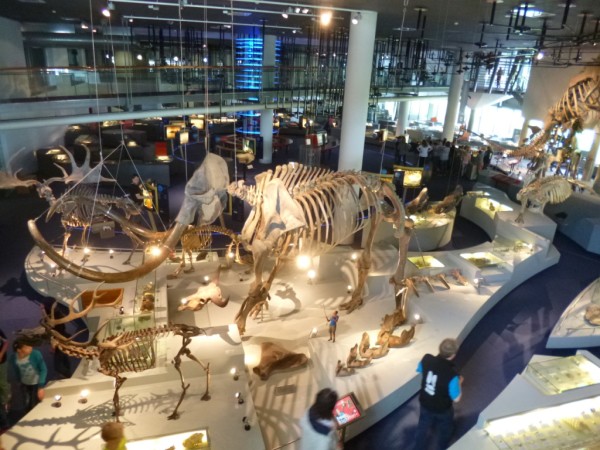It’s always exciting when your research data throws up something counter-intuitive. Or at least something that’s at odds with “conventional wisdom” on the subject.
One such piece of wisdom about museum visitors is that young adults (particularly those aged under 25) tend not to visit museums. Population-level statistical data tends to back this up, with a characteristic dip in the 18-24 age bracket (see this graphic from a previous post):

Now, here is the age breakdown of the respondents to my visitor survey conducted at the SA Museum as part of my PhD research:
Not only are visitors aged under 30 not under-represented, they form the biggest age group I surveyed by a considerable margin! This is a surprising (albeit incidental) finding from my research which makes me wonder what’s going on here. Based on what I observed at the Museum during my fieldwork I have come up with the following hypotheses:
- Proximity to university campuses. The SA Museum is right next door to Adelaide University and not very far from one of the main campuses of the University of South Australia. I got into conversation with a couple of groups of young adults who indicated they were visiting the museum to kill time between lectures.
- The backpacker factor: The SA Museum is a popular destination with both interstate and international visitors (more than half of my sample indicated they were visiting the Museum for the first time, and I would wager that the majority of these people were tourists). Among the survey sample, there appeared to be considerable numbers of young “backpacker” tourists (based on my fieldwork observations). Anecdotally, it appeared that younger international tourists were less likely to experience the language barriers of older tourists, which would have prevented them from participating in the study (about 7% of the visitors I approached to complete a survey had limited or no English).
- Free and centrally located: a few people indicated they were in the museum because it was free to enter and a way of escaping the heat or rain. There were a couple of people who were waiting for someone with a hospital appointment (the Royal Adelaide Hospital is just down the road). Of course, they could have also spent this time in the shopping malls which are just across the road – but for some reason chose not to. So there is clearly some other characteristics of the museum that are attractive to them but which were beyond the scope of this survey. Others appear to have been ‘doing’ the precinct, visiting the Art Gallery of South Australia (next door) as well as the museum.
- Young parents: A fair proportion of those in the 18-29 age group were accompanying young(ish) children. I don’t know if it’s just me, but I sense there has been a demographic shift between Generations X and Y. Most people of my (Gen X) vintage seemed to be well into their thirties before they settled down and started families. I suspect Gen Ys are having children younger, for a whole range of complex reasons which are beyond the scope of this post. This is just a gut feeling though – I haven’t cracked open the data.
- Young couples: There was a surprising proportion of young (and highly demonstrative!) couples around. The museum as a date venue?
- Patterns in the smoke: There is of course the possibility that this cluster is just a random quirk of my particular data set. However, the surveys were conducted across weekdays, weekends and public holidays (but not school holidays) to help control for variation in visiting patterns. My fieldwork observations show nothing to indicate that 18-29 year olds were more likely to agree to complete a survey than other age groups.
In retrospect, it would have been good if I’d been able to distinguish between the under and over 25s by splitting the age ranges the way the ABS do (I had a reason why I didn’t but in any case it’s no big deal). However, I went back to a pilot sample from late last year and found the age spread using different categories was broadly similar:
So what does all this mean? I’m not sure yet. Age is not expected to be a significant variable in my own research, and I only collected very basic demographic information so I had a general sense of the survey population. I’d be interested in how this tallies with other museums though, particularly those that are free as opposed to ticketed entry. Ticketed venues tend to collect more comprehensive visitor data, and we tend to extrapolate from that. But perhaps they are not fully representative of museums as a whole?


